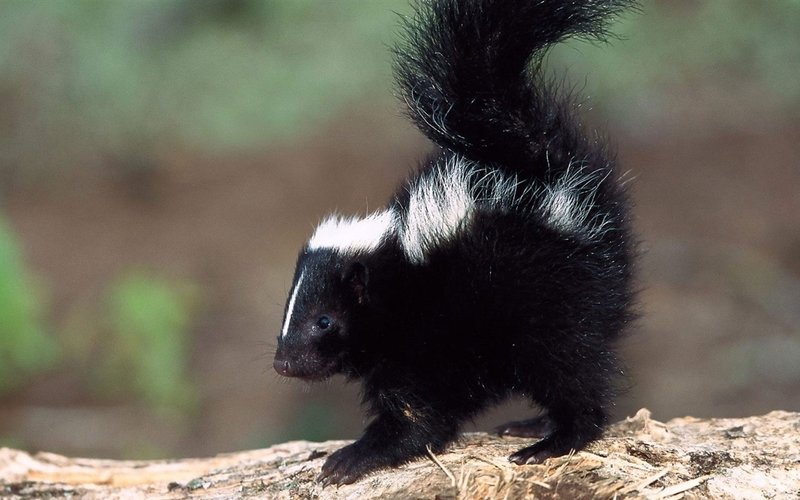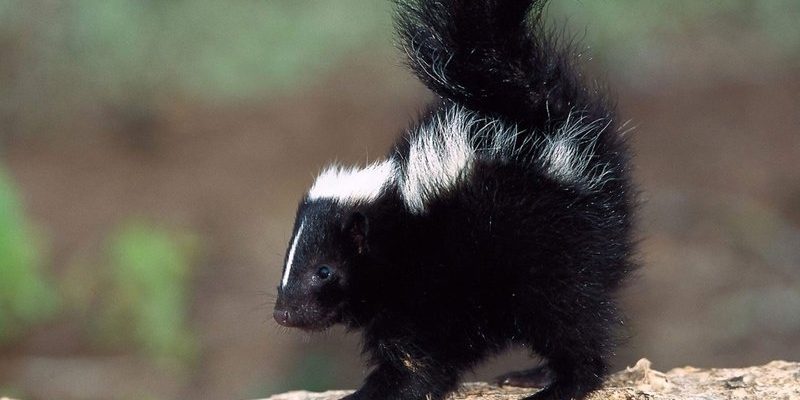
So, let’s dive into the world of skunks together over coffee, shall we? Imagine a cute, fluffy creature with a striking black-and-white coat. Skunks play a vital role in the ecosystem, helping to control pests and even aerate the soil. Yet, despite their importance, many folks hold onto outdated beliefs. In this article, we’ll bust some of those myths and help you see skunks in a whole new light.
Myth 1: Skunks Are Always Smelly
One of the biggest misconceptions about skunks is that they are always smelly. You might think that just catching a glimpse of one means you’ll be holding your nose for the rest of the day. But here’s the reality: skunks only spray when they feel threatened. It’s their way of saying, “Back off!”
They have special glands that produce their infamous spray, which can be quite potent. However, they don’t just blast it without reason. When a skunk is relaxed and at ease, they don’t emit that strong odor. So, if you see one waddling across your yard, it’s likely just going about its business—enjoying a late-night snack or exploring its surroundings.
To better understand skunks, think about them like people. Just as you wouldn’t want to be judged solely by your worst moments, skunks shouldn’t be defined by their spray. They’re curious and playful creatures that have a whole lot more going on than just their odor.
Myth 2: Skunks Are Dangerous
Another common myth is that skunks are dangerous animals. Many people fear them, thinking they might attack or cause harm. However, skunks are generally quite shy and prefer to avoid confrontation. If you find yourself face-to-face with one, it usually means you’ve invaded its comfort zone.
Skunks might look tough with their bold markings, but they’re not aggressive by nature. In fact, they’d rather run away than cause a fuss. If they do feel threatened, their first instinct is to warn you with a series of hisses or foot stomps. Only if that fails will they resort to using their spray.
So, if you encounter a skunk in your backyard, it’s best to give it some space. Allow it to wander off, just like you would with an upset friend. Remember, the skunk is just as scared of you as you might be of it.
Myth 3: All Skunks Are Pests
Many people categorize skunks as pests, but that’s a narrow view. While they can dig around for food and occasionally create a mess, skunks serve essential roles in our ecosystem. Think of them as nature’s little cleanup crew. They eat insects, small rodents, and even carrion. By keeping these populations in check, skunks contribute to a balanced environment.
In addition, skunks help in seed dispersal. As they munch on various fruits, they’ll unintentionally drop seeds in different locations, helping plants grow. It’s almost like they’re planting little seeds of joy wherever they go!
So, instead of merely seeing them as nuisances, consider the bigger picture. Skunks are vital for maintaining the health of ecosystems.
Myth 4: Skunks Only Come Out at Night
You might think skunks are strictly nocturnal, only roaming the streets under the cover of darkness. While it’s true that they’re more active at night, they can also be seen during the day—especially if food is scarce. Imagine it like a teenager sneaking out of the house; sometimes they just can’t resist the temptation of late-night snacks!
If they’re desperate for food, skunks will venture out, even in broad daylight. They’re opportunistic eaters, meaning they’ll take advantage of whatever is available. This could lead to them rummaging through trash cans or looking for food scraps in your garden.
So, while the twilight hours might be their prime time, you shouldn’t be surprised if you spot one during the day. They’re just following their stomachs!
Myth 5: Skunks Are Just a Nuisance
Some people might believe that skunks are merely nuisances with no redeeming qualities. However, this couldn’t be further from the truth. Aside from their crucial roles in pest control and seed dispersal, skunks are interesting animals with unique behaviors and characteristics.
For instance, skunks are known for their playful nature. Young skunks often engage in wrestling and chasing games, showcasing their social behaviors. Observing these antics can be delightful, reminding us that there’s more to these creatures than just their reputation.
Plus, skunks are fascinating to study. They exhibit various adaptations, like their ability to climb trees or dig burrows for shelter. So, next time you see a skunk, take a moment to appreciate its uniqueness instead of dismissing it as just another pest.
Myth 6: Skunks Can’t Be Tamed
You might have heard that skunks can’t be tamed or domesticated. While it’s true that skunks are wild animals—and they thrive better in their natural environment—there are some people who keep pet skunks. Just like cats or dogs, these animals can develop bonds with their human caretakers.
However, it’s essential to do thorough research before considering a pet skunk. Certain breeds are less likely to spray, and they often require special care and diet. Plus, in many places, it’s necessary to have a permit to own one.
Owning a skunk can be rewarding, but it’s not for everyone. If you decide to take that leap, prepare for an adventure filled with quirks and surprises. Just remember, they still have their wild instincts, so keep an open mind.
Skunks are far more than their notorious reputation. By debunking these common myths and misconceptions, we can appreciate skunks for the vital roles they play in our ecosystems. They’re not just smelly nuisances or dangerous pests. They’re shy, playful creatures that serve important functions in nature.
The next time you see a skunk, instead of running away, consider observing it from a safe distance. You might find yourself captivated by their antics and intrigued by their contributions to the environment. So, let’s change how we view these misunderstood mammals and give them the respect they deserve. After all, a skunk may just be nature’s adorable little secret waiting to be discovered.

